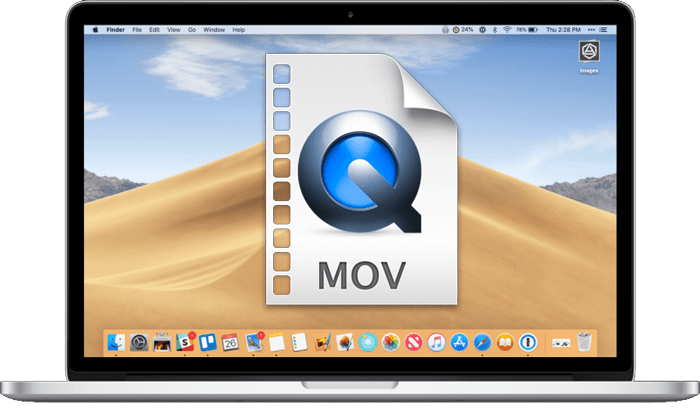MOV vs MP4: What are the differences?
You must have come across different video formats using your computer or mobile device, right? Several options are available in the market today, including the most common ones like MOV, AVI, MP4, and WMA. In this article, we are going to make a comparison between MOV VS MP4. Throughout the text, you will understand which format is best, what are the differences between them, and which formats you should use.
What are video formats?
But before we talk about one vs the other, it’s important to explain what video formats are. They are standards established in the technology industry for organizing and reproducing bits, that is, the information contained in videos. Through these standards, devices and software can be designed to bring a good audiovisual experience to the user.
In this sense, video formats are file extensions that define how a video medium is encoded, compressed, and stored. They are important because they affect the quality and compatibility of a video. It’s important to choose the right format for your needs, considering factors such as hardware and software device compatibility, video quality, and desired file size.
What is the MOV video format?
MOV is an earlier file than MP4, and was developed by the technology giant Apple in 1991. It was designed to be used in Apple’s operating system and in the company’s video playback software, QuickTime.
MOV also uses compression technology which helps in file scaling. Despite having been developed by Apple, MOV has become a common video standard on many devices and operating systems, such as Windows itself.
What is the MP4 video format?
MP4 is a multimedia file format which is also known as MPEG-4. The standard was developed in 1998 by a group of researchers from the Fraunhofer Institute, in Germany, and is present in several content reproduction devices and software.
MP4 was created based on MOV technology. And like its competitor, MP4 uses compression technologies that slightly affect the video and sound quality of the file. However, this compression helps with file scaling, which makes it easier to transmit, play, and store the content.
Thus, due to this compression factor, MP4 is a leader in the online video playback segment, as it optimizes the contents very well, which helps to reduce costs for companies, in addition to improving the experience of users with a slow device or connection.
MOV vs MP4: Similarities and Differences
MP4 and MOV multimedia formats are technologically very similar, as one was developed based on the other. However, there are important differences between the two formats:
- File Size: MP4 is capable of compressing videos to a smaller file size while MOV can have larger files due to its ability to store high-quality videos.
- Compatibility: MP4 is compatible with most devices and operating systems. MOV is also available in several places, however, it is more common for playback problems to occur on devices and systems that were not developed by Apple, such as Windows, for example.
- Video Quality: Both are capable of storing videos with great quality, but MOV is known for supporting very high-quality videos and offering smooth playback, making it an attractive option for video professionals.
- Video editing: While MP4 is easily editable in most video editors, MOV is ideal for editing on Apple devices and software.
- Metadata: Both formats support metadata and allow the addition of important information, such as authorship and description of the presented content.
- Support for subtitles and languages: Both MP4 and MOV support adding subtitles and are multilingual.
- Mobile Devices: Both video formats are available on the most popular mobile devices on the market.
- Video editors: Both formats can be modified in the main video editors on the market, including Adobe Premiere Pro, Final Cut Pro, and iMovie.
Mov vs MP4: after all, which is the best format?
There is no best or worst video format, just different standards that suit different needs and use cases. The differences between MOV and MP4 are subtle, and the choice depends on your purpose.
MOV was developed with a focus on video editing. Because of this, it is capable of supporting superior video qualities. MOV is certainly one of the top choices within the film and television industry due to its high standard. Furthermore, MOV also has better support for different contents such as 360° recorded videos.
Of course, it should be noted that the MOV standard is ideal for anyone working with Apple devices, as the format was developed by the technology giant.
MP4, in turn, is ideal for size optimization, but still with good quality after resizing. Because of this, MP4 is the main choice for companies that provide streaming services and online content producers, since it is easier to provide optimized video standards.
Youtube itself, the main video-sharing platform in the world, recommends that content creators upload their content in MP4 format.
Take these aspects into account before choosing the best video format option for your project or personal use.
Article Tip: 10 Best Video Player Apps for Android
How to convert MOV to MP4?
To convert an MP4 file to MOV and vice versa, you can use a number of online sites such as Cloudconvert or Convertio. The whole process is very simple, just select the file, wait for the upload, configure some aspect, if necessary, and that’s it, just download the new file.
The conversion process can also be done locally using a video editor that supports both formats. Both MP4 and MOV are supported by Premiere PRO, the leading video editing software on the market, maintained by Adobe. Final Cut Pro and iMovie also allow file conversion.







